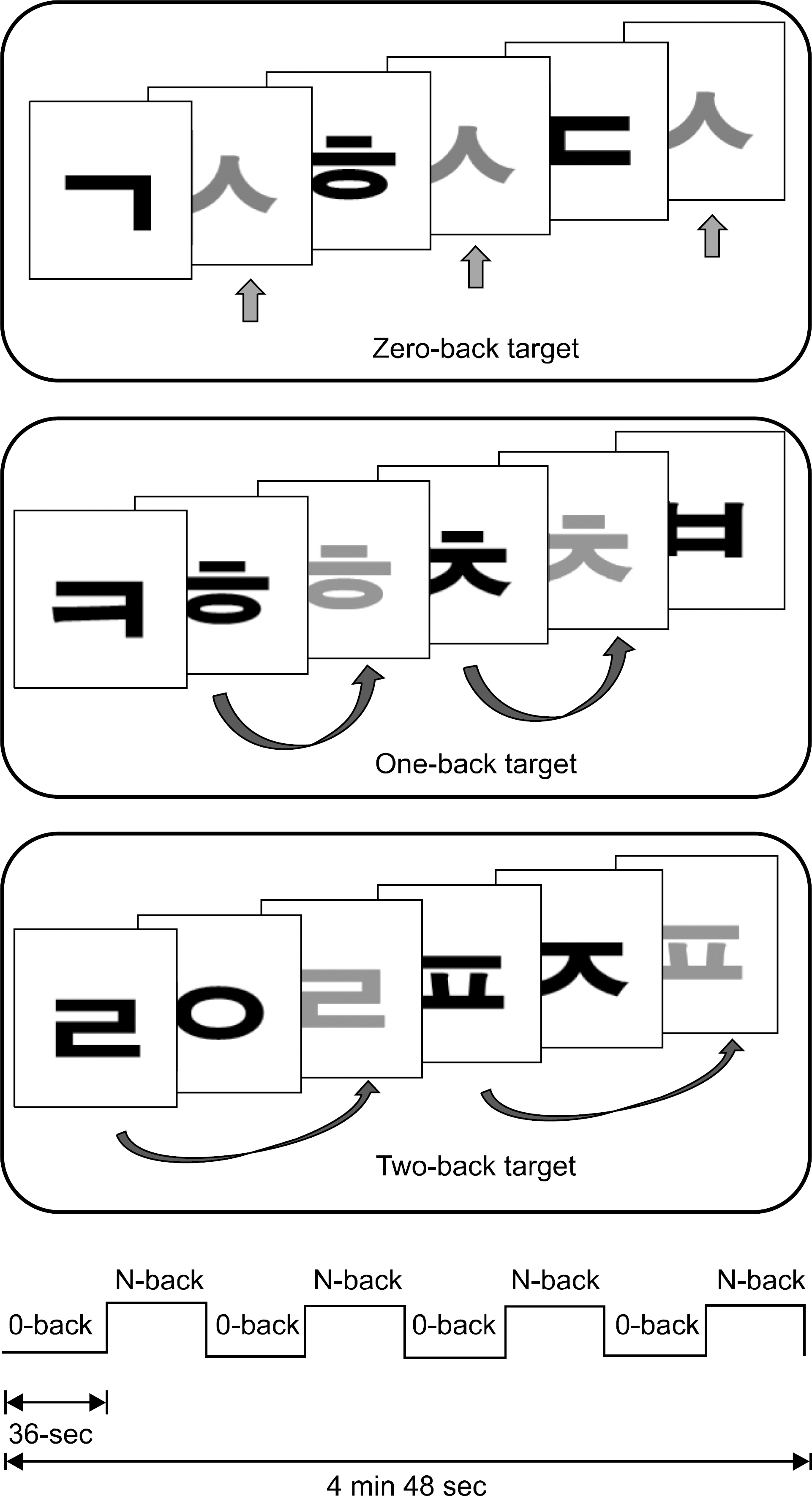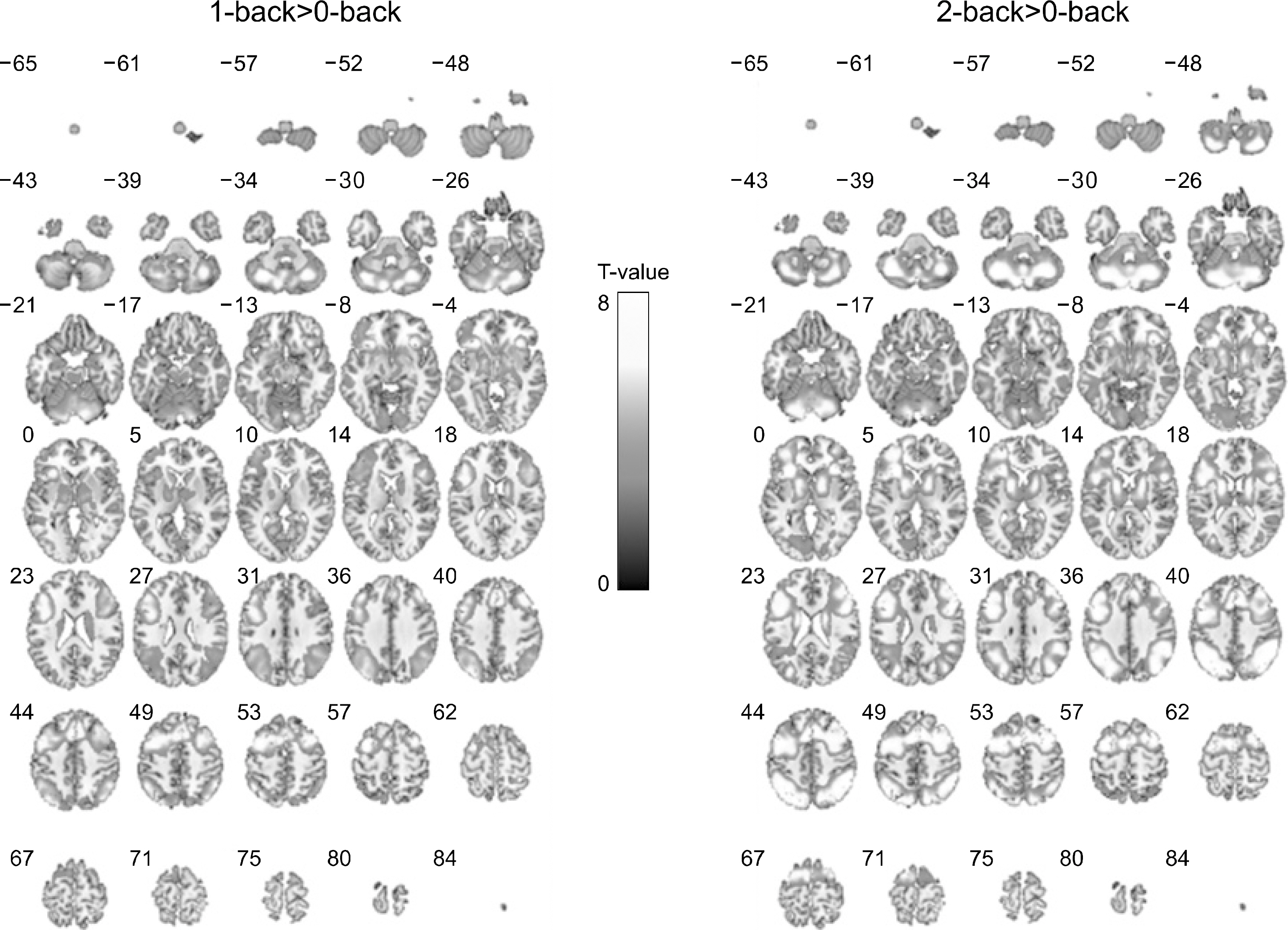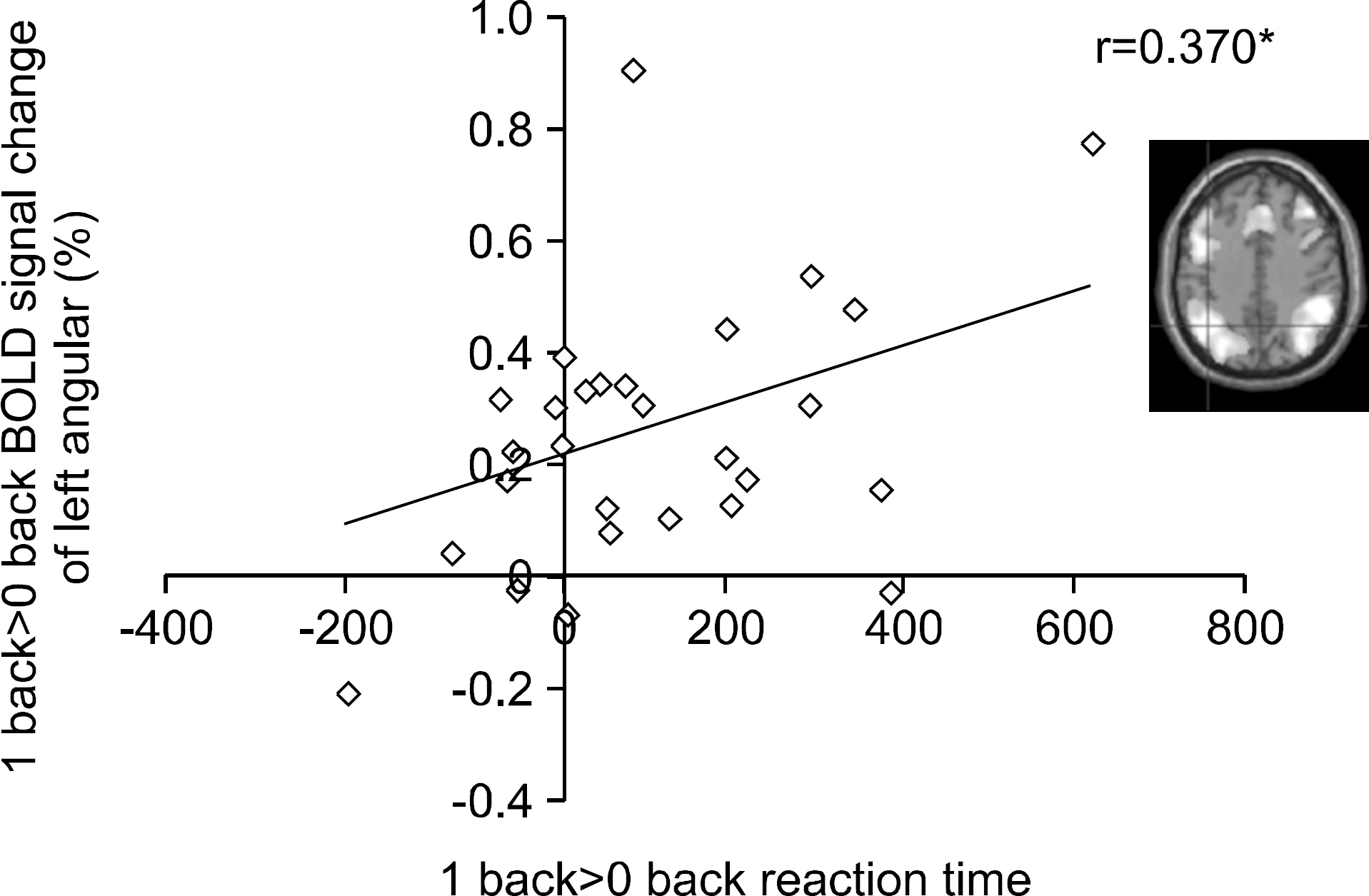Prog Med Phys.
2015 Jun;26(2):72-78. 10.14316/pmp.2015.26.2.72.
The Neural Alteration according to Cognitive Load on Working Memory by Organic-Solvent Exposures
- Affiliations
-
- 1Department of Medical & Biological Engineering, Kyungpook National University, Daegu, Korea. ychang@knu.ac.kr
- 2Department of Occupational and Environmental Medicine, University of Ulsan College of Medicine, Ulsan, Korea.
- 3School of Electronics Engineering, College of IT Engineering, Daegu, Korea.
- 4Department of Molecular Medicine, Kyungpook National University College of Medicine, Daegu, Korea.
- KMID: 1889938
- DOI: http://doi.org/10.14316/pmp.2015.26.2.72
Abstract
- Organic solvents are known toxic effects like vertigo, behavioral obstacle, distracting, and peripheral neuropathy in neuron areas. However, there have been few studies how neurotoxic solvents-exposed workers are affected by the cognitive load of preceding working memory tasks. Therefore, we used fMRI as to measure the neural correlates of working memory impairment in occupational workers who had from chronic exposure to organic solvent. Twenty-nine solvent-exposed workers were included in this study. Each participant concluded the verbal N-back tasks (1- and 2-back) during the fMRI acquisition. Within-group analyses showed fronto-parietal networks were active in each condition. Direct comparisons between 1- and 2-back showed higher activation during the 2-back than 1-back. We found that increased activation of these regions at lower task demand is associated with increased cost of implementing.
Keyword
MeSH Terms
Figure
Reference
-
References
1. Bale AS, Barone S, Jr. , Scott CS, Cooper GS. A review of potential neurotoxic mechanisms among three chlorinated organic solvents. Toxicol Appl Pharmacol. 255:113–126. 2011.
Article2. Spencer PS, Schaumburg HH, Sabri MI, Veronesi B. The enlarging view of hexacarbon neurotoxicity. Crit Rev Toxicol. 7:279–356. 1980.
Article3. Firestone JA, Longstrength WTJ. Neurologic and psychiatric disorders. Rosenstock L, Cullen M, Brodkin C, Redlich C: Textbook of clinical occupational and environmental medicine. 4thed, Saunders Elsevier, Philadelphia (. 2004. ), pp.645–660.4. Mikkelsen S. Epidemiological update on solvent neurotoxicity. Environ Res. 73:101–112. 1997.
Article5. Baker EL. A review of recent research on health effects of human occupational exposure to organic solvents. A critical review. J Occup med. 36:1079–1092. 1994.6. Haut MW, Leach S, Kuwabara H, et al. Verbal working memory and solvent exposure: a positron emission tomography study. Neuropsychology. 14:551–558. 2000.
Article7. Owen AM, McMillan KM, Laird AR, Bullmore E. N-back working memory paradigm: a metaanalysis of normative functional neuroimaging studies. Hum Brain Mapp. 25:46–59. 2005.
Article8. Evans A, Collins DL, Mills SR, et al. 3D statistical neuroanatomical models from 305 MRI volumes. Proc IEEE-Nuclear Science Symposium and Medical Imaging Conference. 3:1813–1817. 1993.
Article9. Braver TS, Cohen JD, Nystrom LE, et al. A parametric study of prefrontal cortex involvement in human working memory. NeuroImage. 5:49–62. 1997.
Article10. Cohen JD, Perlstein WM, Braver TS, et al. Temporal dynamics of brain activation during a working memory task. Nature. 386:604–608. 1997.
Article11. Petrides M. Dissociable roles of mid-dorsolateral prefrontal and anterior inferotemporal cortex in visual working memory. Journal of Neuroscience. 20(19):7496–7503. 2000.
Article12. Hagoort P, Hald L, Bastiaansen M, Petersson KM. Integration of word meaning and world knowledge in language comprehension. Science. 304(5669):438–441. 2004.
Article13. Barbey AK, Kruger F, Grafman J. An evolutionarily adaptive neural architecture for social reasoning. Trends Neurosci. 32(12):603–610. 2009.
Article14. Rypma B, Berger JS, D'Esposito M. The influence of working memory demand and subject performance on prefrontal cortical activity. J CognNeurosci. 14(5):721–731. 2002.15. Davachi L, Maril A, Wagner AD. When keeping in mind supports later bringing to mind: neural markers of phonological rehearsal predict subsequent remembering. Journal of Cognitive Neuroscience. 13(8):1059–1070. 2001.
Article16. Henson RN, Burgess N, Frith CD. Recoding, storage, rehearsal and grouping in verbal short-term memory: An fMRI study. Neuropsychologia. 38(4):426–440. 2000.
Article17. Majerus S, Laureys S, Collette F, et al. Phonological short-term memory networks following recovery from Landau and Kleffner syndrome. Hum Brain Mapp. 19:133–144. 2003.
Article
- Full Text Links
- Actions
-
Cited
- CITED
-
- Close
- Share
- Similar articles
-
- Sex differences of cognitive load effects on object-location binding memory
- Five Year's Follow-up of the Cardiovascular Disease Risk Factors among the Low Level Organic Solvent Exposure Workers
- Working Memory Impairment in a Delayed Matching-to-Sample Task Among Young Male Patients With Obsessive-Compulsive Disorder
- Cognitive Impairment and Peripheral Neuropathy by Mixed Organic Solvents in Spray Painters Working in a Shipbuilding Industry
- Relationship of Working Memory, Processing Speed, and Fluid Reasoning in Psychiatric Patients





